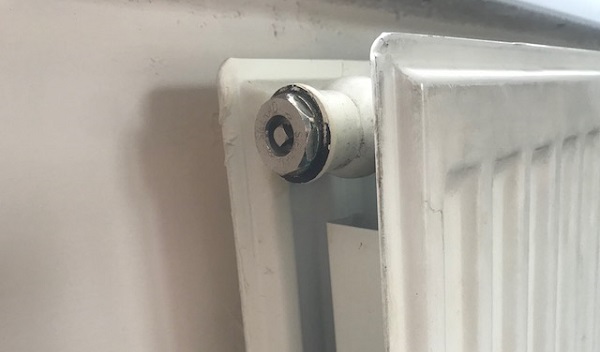You can manage your cookie preferences in the sections below. If you would like to know more, please view our privacy & cookie policy.
How to bleed a radiators in 5 simple steps
It's only just turned September, but those long, hot, post-lockdown summer days (there was at least a week's worth) already feel like a lifetime ago and the days are getting noticeably shorter and colder.
That means it's time to think about turning the central heating back on, if you haven't done so already.

The trouble is, after taking a break for the summer, your system might not be working as efficiently as it should be.
If your radiators aren't heating your home properly, it could be because air bubbles are trapped in the system. These bubbles stop the normal flow of the hot water and leave you with a colder home and higher energy bills.
So, to help save you from unecessarily high energy bills, and from suffering the cold as the dark nights draw in, here's how to bleed your radiators in five simple steps... ## How to bleed your radiators ### **Step 1 - Work out which radiators need bleeding** Turn on your radiators and wait until they are fully heated. Be careful and do not burn your hands. If the radiator is cool at the bottom and hot at the top or it is not distributing heat evenly, it might be due to trapped air. Don't worry, it a common issue and can be fixed under half an hour. Your radiators just need bleeding. ### **Step 2 - Gather your tools** You will need: - Radiator key (you might also be able to use narrow pliers, but take care so as not to damage the valve) - Dry cloth - Small bowl ### **Step 3 - Prepare and turn off the heating** Always turn the heating off before you start bleeding your radiators - if you leave it on, more air can be pushed into the system, and cool radiators are easier to handle. Next step is to find a radiator valve. Radiator valves can be found at the top corners of the heaters as per the picture below.  ### **Step 4 - Bleed the radiators** - Push the radiator key into the center of the valve - Place the bowl underneath the radiator in order to catch the excess water - Put the cloth over the radiator key and turn the key slowly anti-clockwise - At this point, you will hear the hissing sound, that means you are doing everything correctly and the air bubbles are escaping - Once the air has escaped, quickly close the valve to prevent any unwanted leakage ### **Step 5 - Check the pressure of your boiler and switch the heating on** The final step is to check whether the boiler pressure is at its adequate level. ### What pressure should your boiler be at? When the heating system is cool, the indicator should be in the green section and the pressure should be between 1 and 1.5 bar on the pressure gauge. If pressure is below 0.5 bar, and the indicator is in the red section, water has been lost from the system and must be replaced. If it is below the optimal level you will need to repressurize the system. ### How to re-pressurise your boiler system If you need to increase the pressure and top up your system, you'll need find the filling loop - a sliver/grey flexible hose with a small valve at each end, which is usually found underneath the boiler. Once you've found the filling loop, make sure the boiler is switched off and the system is cool and both ends of the hose are firmly attached to both valves, then increase the pressure as follows: - Open both valves, using the tap handles or a flat-headed screwdriver, to allow cold mains water into the system. You should be able to hear it filling with water. - Keep a close eye on the pressure bar, once it reaches the required level of between 1 and 1.5 bar, close both valves, one afetr the other. With the pressure now at the optimal level, you cna switch the boiler back on and turn on the radiators, which should now be heating evenly and efficiently. You should also check for any unexpected leaks and make sure heat is being evenly distributed across the heating panel. If there are any leaks, make sure you've tightended the valves properly. If the leaks persist, or the heat still isn't spreading evenly across the radiator, you should call your local plumber to take a look.It’s September 1st. Today seems a little darker and colder than normal. It feels like autumn already. You know what’s coming next…
— UKPower (@ukpower) September 1, 2021
Have you got the heating on? 🥶
Click here to run an energy price comparison, and see if you could be paying less for your gas and electricity.


